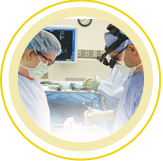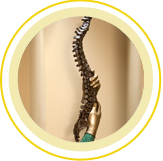Posture at work, rest, and play affects the health of your back and neck. Posture is a result of proper body mechanics — which occurs when your spine goes from the healthy neutral position into action.
STEP 1: Understand the Neutral Back Position
- A healthy spine has three natural curves:
- The neck, or cervical spine, curves slightly inward
- The mid back, or thoracic spine, is curved outward
- The low back, or lumbar spine, curves inward
These natural curves are the result of the muscles, ligaments, and tendons that attach to the vertebrae of the spine working together in harmony. Without these supporting structures, the spine would collapse. They support the spine just as guide wires support the mast of a ship.
In your spine, the guide wire system is made up mainly of the abdominal and back muscles. The abdominal muscles provide support by attaching to the ribs, pelvis, and indirectly to the lumbar spine.
The muscles of the back are arranged in layers, with each layer playing an important role in balancing the spine. By using these muscles together, you can change the curves of your spine, like when you bend over to pick something up.
Neutral alignment keeps the muscles, ligaments, and tendons that attach to your spine working together in harmony. This is important to help cushion your spine from too much stress and strain. Learning how to maintain a neutral spine position can help you avoid problems with your spine, and help you move safely during activities like sitting, walking, and lifting.
Controlling the tilt of your pelvis is one way to help balance your spine. As certain muscles of the back and abdomen contract, the pelvis rotates. As the pelvis rotates forward, the lumbar curve increases. As the pelvis rotates backward, the curve of the low back straightens. Rotation of the pelvis is like a wheel centered at the hip joint. The muscles of the upper thighs also attach to the pelvis and contraction of these muscles can be used to change the curve of the spine.
The abdominal muscles work alone or with the hamstring muscles to rotate your pelvis backward. This causes the slight inward curve of the low back to straighten. If these muscles cause the curve of the low back to straighten too much, this may produce an unhealthy slouching posture.
In the other direction, the hip flexor and back extensor muscles rotate the pelvis forward. This increases the curve of your lower back. If this curve is increased too much, another unhealthy posture may result.
A balance of strength and flexibility is the key to maintaining the neutral spine position. This balance ensures the best muscle function. Like a car, an imbalance may lead to wear and tear, eventually damaging the various parts of the car.
Muscle imbalances that affect the spine have many causes. One common cause of muscle imbalance is weak abdominal muscles. As the abdominal muscles sag, the hip flexors become tight, causing an increase in the curve of the low back. Another common problem results from tight hamstrings. As the hamstring muscles become tight, the pelvis is rotated backwards. This produces an abnormal slouching posture.
STEP 2: Put Safe Posture Into Practice
Sitting
Healthy sitting posture is based on the neutral spine position. Positioning your hips and knees at 90 degrees can help you keep a neutral sitting posture. This position is balanced between the extremes of lumbar movement. Remember to choose a properly designed chair to help support your lumbar spine. The neutral spine position is also important when getting up from a chair. Holding your spine safely in neutral, the pelvic wheel turns forward, placing the “nose over the toes.” With the feet placed shoulder width apart, stand upright. Use the buttock and thigh muscles to push yourself up. Do not twist or bend too far over at the waist, or you will put too much strain on your lumbar spine.
Walking
Proper body mechanics are also important while walking. Try to maintain the neutral spine position while walking. In the neutral position, your legs and arms swing naturally during forward motion. Conditions that alter the normal way of walking, and cause a limp, can severely stress the spine. While walking, always try to maintain your spine in the neutral position.
Lifting
Lifting is one of the most dangerous activities for your spine. The neutral spine position MUST be used to reduce the risk of injury. With your spine in the neutral position, movement occurs as the pelvic wheel turns. The hip is the axis of pelvic rotation, not the back! Notice how the back loses the neutral position when the pelvis does not rotate forward. This posture focuses the force on your back muscles during a lift. Lifting in a neutral position allows the larger and more powerful leg muscles to do the lifting. When lifting, first find the neutral position. Bend at the hips by rotating the pelvic wheel at the hip joint axis. Keep the safe posture, hold the object securely, and use your large leg muscles to generate power. Tighten your abdominal muscles during the lift to create a stabilizing corset around your trunk.



